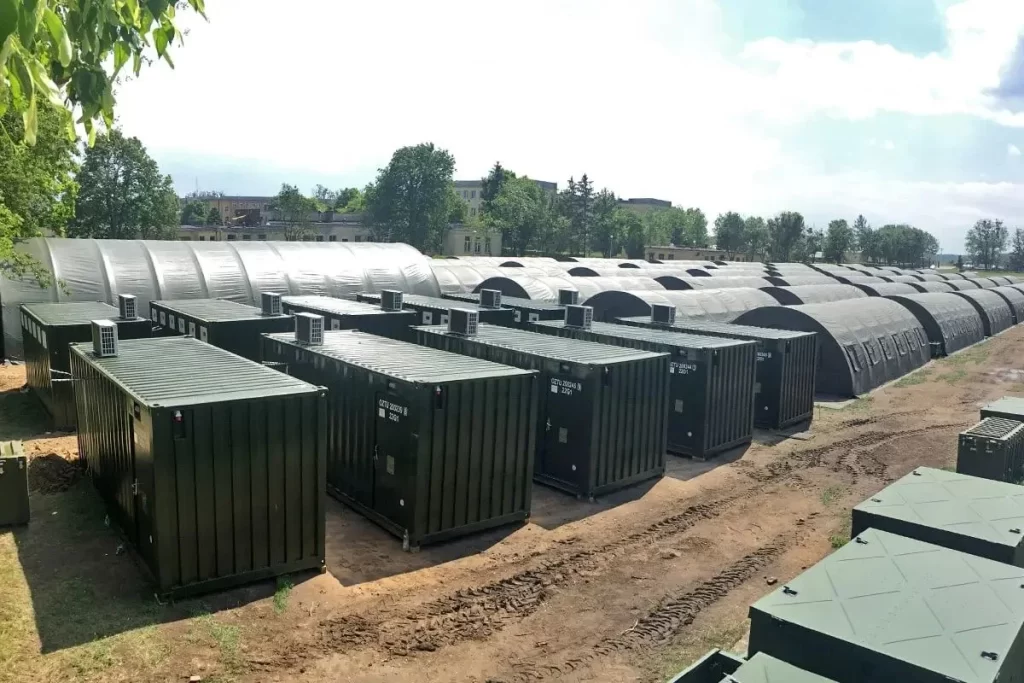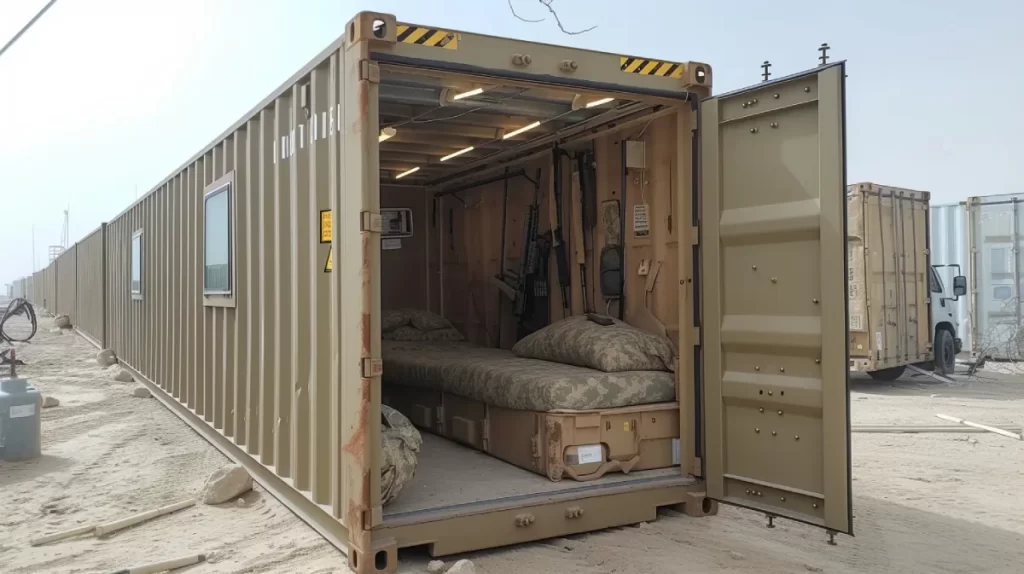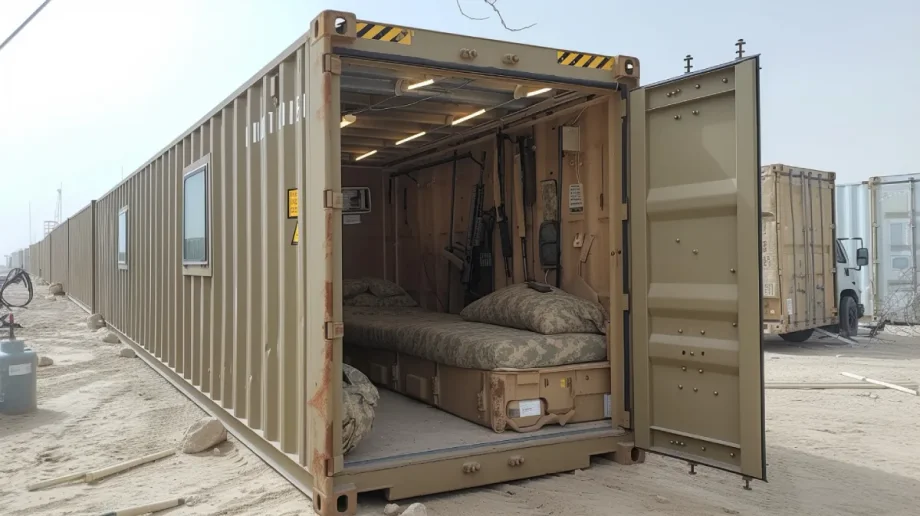2024 Buyer’s Guide to Military Shipping Containers (Conex)
Explore our 2024 guide for military storage & shipping containers. Discover key insights & tips to choose the best conex for your operations.

Logistics is the life support of combat. A military can’t sustain combat operations without the ability to supply troops and maintain equipment, after all. As someone who works in military logistics—whether as a procurement professional, logistics or supply chain officer, or facilities manager—you know that your primary goal is to maximize combat readiness and effectiveness in one of the most logistically complex fields. Military shipping containers, with their durability against the elements, their flexibility for multiple use cases—from storage to housing—and their compatibility with multiple modes of transportation, are a cornerstone of the work that you do.
What are military containers?
Military shipping containers—also known as military cargo containers, military conexes, army conexes, or army shipping containers—play a critical role in the logistics operations for defense agencies. Military storage containers or boxes are often made of metals like aluminum or steel to withstand harsh environments and provide the secure transportation of combat materials and goods. Their compatibility with most modes of transportation makes them uniquely mobile, ensuring that military units have the necessary resources to fulfill their missions in a timely manner. They can even be used as shelters, barracks, or residences (more on that later!).
The modular nature of military cargo boxes lends them to multiple use cases. Let’s explore some of them now.
Military containers use cases

Logistics is the life support of combat. A military can’t sustain combat operations without the ability to supply troops and maintain equipment, after all. As someone who works in military logistics—whether as a procurement professional, logistics or supply chain officer, or facilities manager—you know that your primary goal is to maximize combat readiness and effectiveness in one of the most logistically complex fields. Military shipping containers, with their durability against the elements, their flexibility for multiple use cases—from storage to housing—and their compatibility with multiple modes of transportation, are a cornerstone of the work that you do.
What are military containers?
Military shipping containers—also known as military cargo containers, military conexes, army conexes, or army shipping containers—play a critical role in the logistics operations for defense agencies. Military storage containers or boxes are often made of metals like aluminum or steel to withstand harsh environments and provide the secure transportation of combat materials and goods. Their compatibility with most modes of transportation makes them uniquely mobile, ensuring that military units have the necessary resources to fulfill their missions in a timely manner. They can even be used as shelters, barracks, or residences (more on that later!).
The modular nature of military cargo boxes lends them to multiple use cases. Let’s explore some of them now.
Military containers use cases

1. Standard Storage
Military cargo boxes can be used for the storage and transportation of basic combat materials, such as clothing or non-perishable goods. Their compatibility with most civilian modes of transportation—including trucks, rail, and sea freight—ensures seamless integration with existing logistics networks.
2. Customized storage
As someone who works in military logistics, you know that the list of goods and materials required by military units is vast, and includes everything from hazardous materials, specialized equipment, medicine, and everything in between. For some of these unique use cases, a large 20-foot military storage container just won’t do the job.
Thankfully, storage containers for government defense agencies can easily be customized for your unique needs. These customizations can include climate control systems, insulation for thermal protection, or shock-absorbing materials.
For transporting food and pharmaceuticals, for instance, which need to be stored at 40 degrees fahrenheit and 86 degrees fahrenheit respectively, refrigerated or insulated military food storage containers are critical. Even Meal, Ready to Eat (MRE)—food specifically designed to withstand harsh conditions without perishing—only lasts one month when kept in storage temperatures of 120 degrees fahrenheit. Alternatively, using climate-controlled military cargo containers that can store materials at a temperature of 80 degrees fahrenheit, MRE will last about three years.
Military conexes can also be customized to provide an extra level of security for materials like weapons, confidential documents, or sensitive equipment. Shipping containers can even be painted camouflage if that is what the environment necessitates.
3. Housing
Across the U.S., containers are used to build all types of housing structures, from affordable housing projects to luxury tiny homes—so why not military shipping container housing? Container construction projects are often more cost- and time-effective than traditional construction. Their mobility means that base camps can be easily transported if needed. Military containerized housing units are built to withstand the harshest environments. And there are fewer materials that you have to plan for when figuring out shipping logistics—you’re already shipping goods in the military cargo containers, after all!
Types of military containers
The most common type of conex used by the military is the standard 20’ container. These are 20’ long x 8’ wide x 8’6” high. Of course, as we’ve discussed in this article, though these standard types of military cargo boxes remove logistical barriers by seamlessly integrating into existing transportation networks, they do not meet all military shipping and storage needs.
Tricon and quadcon containers provide a middle ground, meeting some unique conex needs while also being easily transportable. Tricon containers are typically 6’ or 6.5’, making them one-third the size of a 20’ container. Quadcon containers, on the other hand, are a quarter of the size of a 20’ container. Both are configured to enable containers to be secured together in transport, effectively giving them the same footprint as a 20’ conex.
Regulations and standards
The U.S. Department of Defense has outlined general design guidelines and associated tests to ensure storage containers are military grade. Requirements for specific containers are defined by the individual specification, acquisition, or task order.
Globally recognized organizations, such as the International Maritime Organization (IMO) and International Air Transport Association (IATA), also have established guidelines standardizing the transportation of cargo by sea and air respectively.
Choosing the right military container supplier
Shipping containers are the backbone of military logistics, establishing combat readiness and effectiveness by ensureing that the right goods and materials reach military units at the right time. Partnering with a trusted military container supplier is critical to making that happen.
Calebwedman is the largest online marketplace in the U.S. for new and used shipping containers. Check out our containers for sale.
